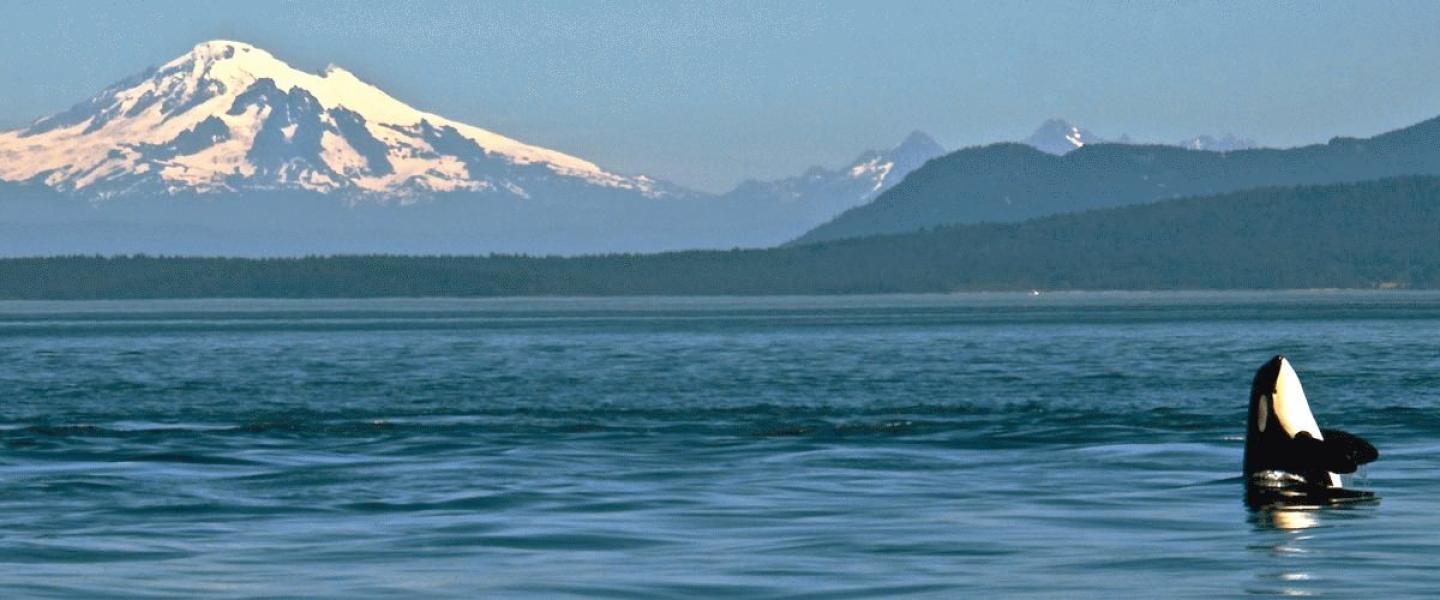
Today was another Mike & Mike adventure on the Sea Lion! Captain Mike and I loaded up the boat with an awesome group of passengers eager to see wildlife. We were no less excited about getting out on the water, so we left Friday Harbor headed South through San Juan Channel. As we had both an incoming tide and a stiff southern wind, we were in for a bit of an adventure further South.
As we made our way through Cattle Pass, the narrow opening of the San Juan Channel between the southern tips of San Juan and Lopez Island, we found the current being squeezed, and thus accelerated, through this narrow passage. The water was alive with upwelling zones that look like smooth glassy patches, small whirlpools forming, birds eagerly waiting on rip lines to snack on some fish, and of course the choppy waters characteristic of this area. This was nothing the Sea Lion couldn't handle of course, so we headed on to the Whale Rocks at the mouth of the pass to see some Stellar's sea lions!
There were perhaps twenty immense sea lions, looking very much like grizzly bears with their tan fur, humped back and snarly attitudes, either lounging or patrolling this rocky outcrop. This group of female and juvenile male pinnipeds chose an excellent location for their rocky kingdom, as the turbid waters surrounding the rocks are rich with nutrients. For the sea lions, this translates into food. Lots of fish, crabs, octopus and the odd baby harbor seal or seabird are found right nearby, but a Stellar's is certainly not above munching a salmon off a fisherman's line given the chance.
After admiring the sights (and smells!) of these incredible animals, we headed West and North up into the Haro Strait toward our reports of Southern Resident Killer Whales! The wind coming out of the Strait of Juan de Fuca was piling up a few whitecaps which rocked the boat just a bit. Luckily everyone aboard had already taken their Dramamine and we were good to go! When the waters of the Haro Strait are riled up, so are the whales! as we approached Eagle Point, we began to see black dorsal fins erupting out of the water followed by the massive shape of an orca every which way we looked. We were fortunate enough to be hanging out with members of both J and K Pods who were currently having a blast. The way the animals were spread out, it was clear that there was some fishing for their favorite food, Chinook salmon, going on. However, every so often a whale would slap it's tail on the surface while another would jump clear out of the white-capped waves! We also were able to witness some surfing going on, where one of these enormous dolphins would ride a wave for fifty yards or so before submerging completely.
During this time, we got some great looks at some of the most distinctive males in the group. The choppy waters makes it somewhat difficult to get great looks at the saddle patch, the white markings on an orca's side that allow us to identify them. However, the raucous, playful behavior of the males combined with their large conspicuous dorsal fins gave some of them away. We got great looks at K21 (Cappuccino), K26 (Lobo), K25 (Scoter)and even L87 (Onyx) who travels quite exclusively with J Pod. These huge animals continued to play, breach, slap and splash throughout the entire time we spent watching them, enjoying the playground of water that the wind provided. Boys will be boys, I suppose.
After getting some great photos and even better memories, we decided that it was time to leave J Pod and K Pod to their devices and begin our journey back to Friday Harbor. Along the way we got some great looks at some of our abundant seabirds like Common Murres and Rhinoceros Auklets along with some harbor seals bobbing on the water's surface. While the array of wildlife and surface phenomena that we are able to see is incredible, it is just a tiny fragment of the ecosystem that exists in the Salish Sea. The interface between air and waters in itself is a big part of this system, as gasses and nutrients are passed from air to water in the forms of bird guano, fir needles and all sorts of fur and feathers entering the water and vice versa as fish and invertebrates are brought out of the water by birds, humans and other mammals. This represents but one way the world continues to amaze.
After a bit of this deep, existential contemplation, we were back at the dock with awesome stories to tell.
Another Whale of a Day in the San Juan Islands!
Naturalist Mike J
M/V Sea Lion
San Juan Safaris